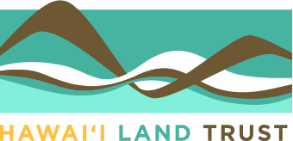A Return to ‘Āina Momona and Their Healthy Communities
“Ā pó used to say: you no hana hana, you no kaukau or, you don’t work, you don’t eat.” Growing up my Tutu Lady always used to warn me and my brother of her grandmother’s saying at the start of every workday on our ‘ohana wetland taro farm in Wailuanui, Maui, pictured above. Our ancestors named this kuleana parcel Lakini, meaning “eternity” or “many days”. Fitting given that my ‘ohana has stewarded this ‘āina since the 1700s—chain of title and kalo farming traditions unbroken. A kuleana (right, privilege, responsibility, or land parcel) sustained by decades’ worth of blood, sweat, and tears that is truly ‘āina momona.
As Kanaka ‘Ōiwi, when we claim our homeland is ‘āina momona, we boast of fat and rich lands, from the uplands to the sea, that are safeguarded by akua, marshalled by a strategic ali‘i, and stewarded by a tireless and sharing community. A measure of the health and wealth of our land, its people, and leaders, ʻāina momona refer to “feeding lands” that are fertile and abundant. Such abundance is made possible by our pilina, our generational connections and interactions with the ‘Ōiwi pantheon, land, and each other. These deep relationships are woven together to create the tapestry of traditional ‘Ōiwi society. Beginning with each ‘ohana, we ensure everyone has more than enough to eat. Farming and fishing are not mere pastimes—but a way of life, and insurance that the ‘ohana and the pilina within continues successfully. Basic sustenance for the ‘ohana, which is not limited to biological relatives, is as seemingly obvious as it is as critical today as it was then.
Since the introduction and dependency on capitalist agricultural ventures, nearly 90% of the food available in Hawai‘i is imported, and the number of farms here and across places like the U.S. is declining while the average age of farmers is increasing. As a critical priority of its Strategic Land Protection Plan, HILT is dedicated to standing shoulder to shoulder with communities in protecting ‘āina momona, manifesting a return to lands that grow healthy food for Hawai‘i’s people. In doing this sacred work and addressing the alarming need, our ‘Āina Protection team focuses on protecting privately-owned land with threatened agricultural resources of high importance commonly by fee purchase or conservation easement, while also meaningfully engaging kamaʻāina, lineal descendants, and the surrounding community. As part of our best practices and track record of success, we have found that community-led and supported land protection results in a fruitful place and community once protected.
For example, in 2022 HILT partnered with non-profit Kahumana Farms to forever protect 24 acres of rich soils in Lualualei Valley in Wai‘anae, ‘O‘ahu, and this summer, 28 acres of Kohala Farmland with homegrown farmers at Island Harvest, Inc. on Hawai‘i Island. We are also looking forward to finalizing our longstanding protection efforts of ancient lo‘i lands with our landowner partner at the famed kalo farming village in Ke‘anae, Maui. These mission-aligned partners are dedicated to creating and fortifying conditions for ‘āina momona by nourishing soil, learning about native crops and diverse cropping systems, adaptive farming and business practices, and promoting respectable jobs for the local agricultural market.
One of the biggest barriers to farming is the high cost of land and at the root of that, seeing land for its maximum and highest financial use. Held by a land trust or sometimes a government agency, agricultural conservation easements are voluntary commitments of landowners to permanently remove subdivision rights while largely limiting development rights and commercial use. This intentionally and effectively prevents the landowner, and future landowners, from maximizing the profits that land in Hawaiʻi has been largely used and sold—and in these cases, helping to ensure the integrity and country character of the Kohala, Wai‘anae, and Maui Hikina communities remain intact.
As communities continue to rebuild their pilina with ‘āina, their ‘ai, and each other, I am reminded of the old adage: He māʻona ʻai a he māʻona iʻa ko ka noanoa, the commoner is satisfied with food and fish. This ʻōlelo noʻeau not only highlights that a person’s greatest achievement is the ability to feed their ‘ohana, but also recognizes the more we are able to cultivate these relationships and grow deeper in our collective commitment to a resilient food system, the more we move the needle toward an ‘āina momona reality in Hawai‘i and beyond.
--V. Lu‘ukia Nakanelua, Esq., ʻĀina Protection Manager and Associate General Counsel
Photos: Andrew Trump of Island Harvest at Union Mill, aerial view of lo‘i kalo at Keanae, and HILT and Kahumana staff at Kahumana Organic Farm in 2022.



